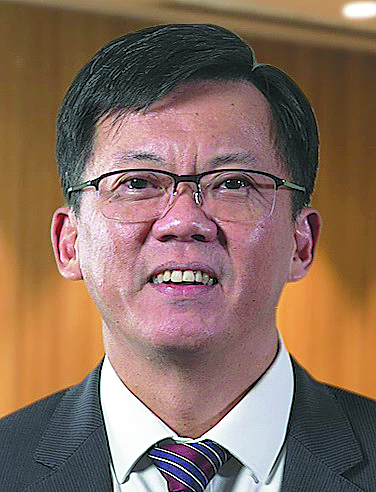
Stanley Huang, CEO of SP Group. [Photo/China Daily]
Singaporean national power grid operator SP Group plans to increase investment in China's clean energy sector, showing confidence in the country's long-term economic growth and decarbonization commitment, said its top executive.
Stanley Huang, CEO of SP Group, said in an exclusive interview with China Daily that by 2030, it plans to own and operate a portfolio of 7 gigawatts of solar assets and 240,000 refrigeration tons (RT) of district cooling capacity in China.
"The Chinese government's consistent efforts to optimize the business environment and launch favorable policies for foreign companies have greatly bolstered our confidence and solidified our commitment to long-term development in China," Huang said.
"Currently, China tops the list as the largest consumer of electricity by volume and also one of the most committed to driving green energy and low-carbon transformation of its economy. China is a key strategic market for SP Group, and we have experienced steady growth since our entry into the Chinese market in 2015," he said.
A wholly owned subsidiary of Temasek Holdings, SP Group owns and operates the electricity and gas transmission and distribution network in Singapore. The group's investment in China is currently focused on expanding its investment and presence in the district cooling and solar sectors. It provides energy-efficient, reliable district cooling and heating solutions that help to reduce carbon emissions for office buildings.
In late August, the group acquired the Shudu Center district cooling project in Chengdu, Sichuan province. The mixed-use development comprises eight buildings including offices, retail facilities and residential space, requiring up to 7,000 RT of cooling and heating capacity.
The investment follows SP's redevelopment of the Chengdu Wuhou International Urban Design Industry Center with an investment of approximately 120 million yuan ($16.5 million), which was completed and became operational last year. For this project, SP was responsible for district cooling and heating, smart metering, digital energy management and monitoring, with a 25-year energy service contract.
"We look forward to exploring diverse investment and collaboration opportunities in China in areas such as solar photovoltaics, energy storage, district cooling and heating, and integrated energy management," Huang said.
SP Group's investment interest in China's PV industry was backed by the latter's rapid growth in recent years. According to the National Energy Administration, as of end-July, total installed capacity of China's solar power generators reached about 490.81 million kilowatts, up 42.9 percent year-on-year.
Jiang Yali, a solar analyst at energy research provider BloombergNEF, said that China is responsible for more than 75 percent of the global PV supply chain. The country has a complete life cycle supply chain in PV facility manufacturing with advancing technologies that continuously drive down costs, enjoying an obvious scale effect.
"SP Group aims to deepen our investment and introduce advanced green energy management solutions to support China's ambitions in growing its solar energy sector," Huang said.
By the end of June, SP Group had approved a cumulative total of some 5 billion yuan in PV project investments in China.
That involved the group's most recent project — the 78-megawatt peak photovoltaic project in Meizhou, Guangdong province — a large-scale facility that integrates PV power generation with agricultural activity. The farm is equipped with an energy storage system and is continuously optimized through a digital energy management system.
"In addition, we are actively pursuing the development of energy storage projects for industrial and commercial users. Plans are underway to deploy a series of energy storage projects for industrial and commercial users in regions such as the Yangtze River Delta and the Guangdong-Hong Kong-Macao Greater Bay Area," Huang added.
"We have been closely monitoring development trends of the Chinese energy market. For example, we have noticed that in the past two years, with the upgrade of the electricity structure, the load difference between peak and valley periods in certain regions has been on the rise.
"Demand-side energy storage helps to balance the load difference between peak and valley periods. We believe there is a huge potential in deploying scalable demand-side energy storage solutions that can enhance the reliability and efficiency of the energy ecosystem," Huang said.
China's power storage industry has experienced explosive growth in recent years. By the end of 2022, China's planned pumped storage hydropower sites had a total resource capacity of about 823 million kW. Meanwhile, the country's new types of energy storage — ways of storing energy other than pumped-storage hydroelectricity — had a cumulative installed capacity of about 13.1 GW, according to a report jointly released by the China Renewable Energy Engineering Institute and the pumpedstorage hydropower branch of the China Society for Hydropower Engineering.